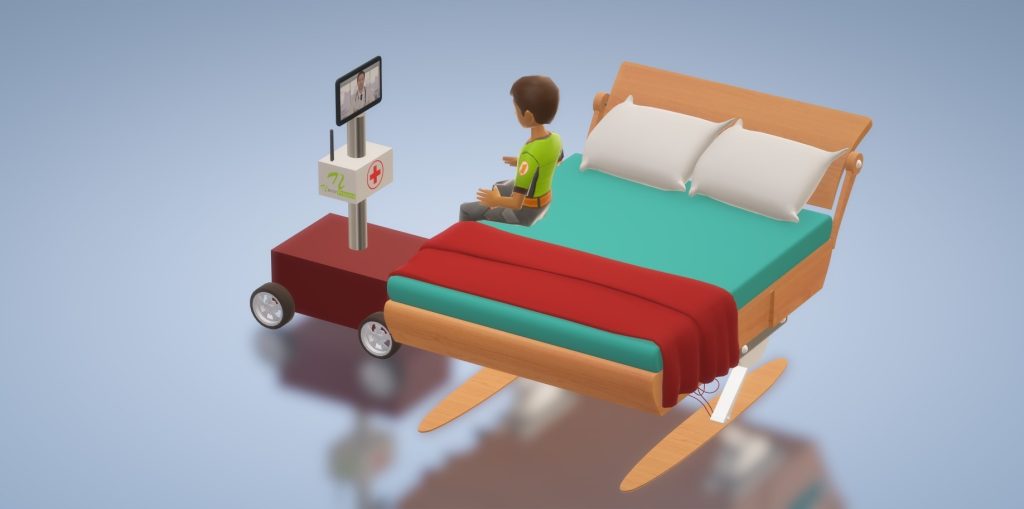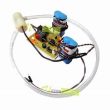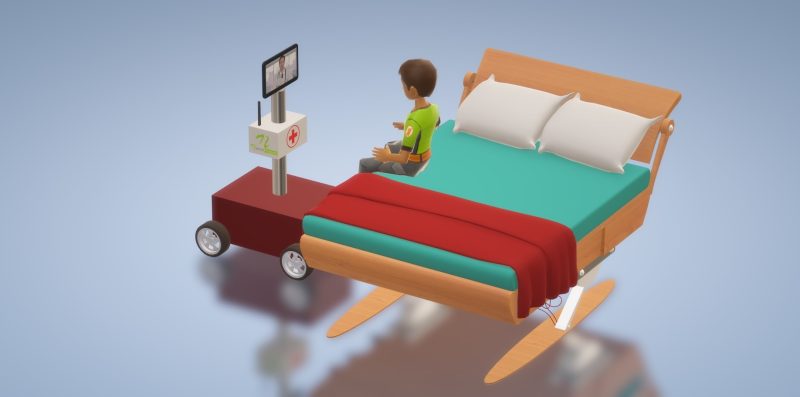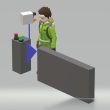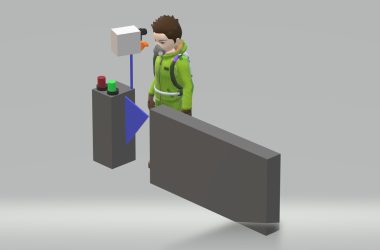In today’s fast-paced world, healthcare services demand rapid accessibility and flexibility. However, with the increasing patient load and the need for expert consultation across multiple locations, healthcare professionals, especially doctors, often find it challenging to be present everywhere when required. Enter the IoT Virtual Doctor Robot, an innovative solution that redefines how healthcare is delivered remotely. By using robotics and IoT (Internet of Things) technology, doctors can now virtually move around hospital premises, interact with patients and medical staff, and even participate in critical operations without being physically present.
In this article, we’ll delve into the concept of the IoT Virtual Doctor Robot, its features, components, applications, and the potential it holds for revolutionizing the healthcare industry.
Table of Contents
- Introduction to IoT Virtual Doctor Robots
- Why the Healthcare Sector Needs Virtual Doctor Robots
- Key Features of the IoT Virtual Doctor Robot
- Doctors’ Mobility
- Remote Patient Interaction
- Real-time Medical Report Access
- How the IoT Virtual Doctor Robot Works
- Essential Components of the Virtual Doctor Robot
- Applications in Healthcare
- Advantages of the IoT Virtual Doctor Robot
- Challenges and Disadvantages
- Future of Remote Healthcare with IoT Robotics
Introduction to IoT Virtual Doctor Robots
The IoT Virtual Doctor Robot is an advanced, mobile robot designed to assist doctors in managing patient care remotely. It allows doctors to be virtually present in different hospital rooms, operation theatres, and emergency centers using robotic mobility and live video communication. Equipped with wireless connectivity and IoT features, this robot is controllable via the internet, enabling real-time interactions and observations.
This revolutionary system empowers doctors to offer their expertise regardless of their physical location, which is a game-changer for healthcare facilities facing resource constraints or specialist shortages.
Why the Healthcare Sector Needs Virtual Doctor Robots
In healthcare, the demand for specialized medical consultation often exceeds the availability of expert professionals. Traditionally, video calls have served as a tool for remote consultation, but they fall short in dynamic hospital environments where a doctor’s physical presence may be necessary for patient observation, team collaboration, or monitoring ongoing surgeries. Virtual doctor robots, with their ability to move freely within hospital spaces, bridge this gap. They provide several key benefits:
- Flexibility for doctors to provide consultations across multiple locations.
- Better management of emergency situations in hospitals where a specialist may not be immediately available.
- Improved efficiency in patient care, especially in remote or under-resourced areas.
Key Features of the IoT Virtual Doctor Robot
The IoT Virtual Doctor Robot is packed with essential features aimed at addressing common challenges faced by doctors in remote patient management:
1. Doctors’ Mobility
The most significant feature of the IoT Virtual Doctor Robot is its mobility. Unlike video calls, which require the doctor to stay stationed at a computer or tablet, the robot allows doctors to move freely around different rooms, be it the patient’s room, the operation theater, or other hospital areas.
2. Remote Patient Interaction
The robot facilitates real-time interaction between the doctor and patients, medical staff, and even family members, offering a more personal and interactive consultation experience. Doctors can remotely maneuver the robot around the patient for detailed observations and conduct examinations with the help of advanced video tools.
3. Real-time Medical Report Access
Doctors can view patient medical reports on the robot’s display, facilitating accurate decision-making even from afar. This seamless access to vital medical information enhances the precision and timeliness of diagnosis and treatment.
How the IoT Virtual Doctor Robot Works
The IoT Virtual Doctor Robot works through a combination of robotics and IoT technology. The doctor controls the robot using an IoT-based control panel. Here’s a step-by-step breakdown of its functionality:
- Remote Control: Doctors use a control panel, accessible via the internet, to send movement commands to the robot. These commands are transmitted over Wi-Fi to the robot’s controller.
- Robotic Mobility: Equipped with four-wheel drive, the robot navigates smoothly across hospital environments, from rooms to corridors, allowing doctors to “walk” virtually through the facility.
- Video Communication: A mounted mobile phone or tablet on the robot facilitates live video calls, enabling real-time communication with patients and staff.
- Battery Monitoring: The robot is equipped with a battery status alert to notify the doctor or hospital staff when it requires recharging, ensuring uninterrupted functionality.
Essential Components of the Virtual Doctor Robot
The IoT Virtual Doctor Robot is made up of several key components, each playing a crucial role in its operation:
- DC Motor: Powers the robot’s movement.
- Gearbox: Ensures smooth navigation and control over speed.
- Wi-Fi Module: Facilitates communication between the robot and the control panel.
- Robotic Base Frame: The structure on which the robot is built.
- Wheels and Shaft: Enable mobility and maneuverability across hospital floors.
- Mounting System: Holds the mobile or tablet device for video communication.
- Controller Box: Houses the circuitry responsible for receiving and executing movement commands.
- Battery System: Provides power to the robot with monitoring alerts for charging.
Applications in Healthcare
The IoT Virtual Doctor Robot has numerous applications, especially in environments where doctors cannot be physically present:
- Hospitals & Clinics: It allows doctors to manage patient care across multiple wards and departments.
- Emergency Centers: Doctors can provide rapid, expert input in critical emergencies even if they are located miles away.
- Telemedicine: The robot extends the scope of telemedicine by adding mobility and enhanced interaction to the typical video consultation format.
Advantages of the IoT Virtual Doctor Robot
- Doctors’ Ability to Be Anywhere: Doctors can virtually attend to patients regardless of their geographical location.
- Enhanced Presence in Operation Theatres: The robot allows doctors to oversee surgeries and interact with surgical teams remotely.
- Seamless Patient Interaction: With real-time video, doctors can see patients and engage with medical reports, improving diagnosis and treatment.
- Convenient Movement: Doctors can move the robot around various hospital rooms at will, providing a dynamic and thorough consultation experience.
Challenges and Disadvantages
While the IoT Virtual Doctor Robot offers a host of advantages, there are some challenges to consider:
- Battery Dependency: The robot requires regular charging, and any interruption in battery life could hinder its operation.
- Device Dependency: A mobile phone or tablet needs to be mounted on the robot for video calls, which may introduce issues related to device compatibility and internet connectivity.
- Initial Setup Costs: The cost of deploying these robots in hospitals could be high initially, particularly for small or underfunded institutions.
Future of Remote Healthcare with IoT Robotics
As IoT technology and robotics continue to evolve, the future of remote healthcare looks promising. We can expect robots with more advanced capabilities, such as AI-driven diagnosis tools, enhanced sensors for medical observations, and even surgical assistance. These advancements could make healthcare more accessible, reduce response times, and bridge the gap between doctors and patients in remote or underserved areas.
Front View
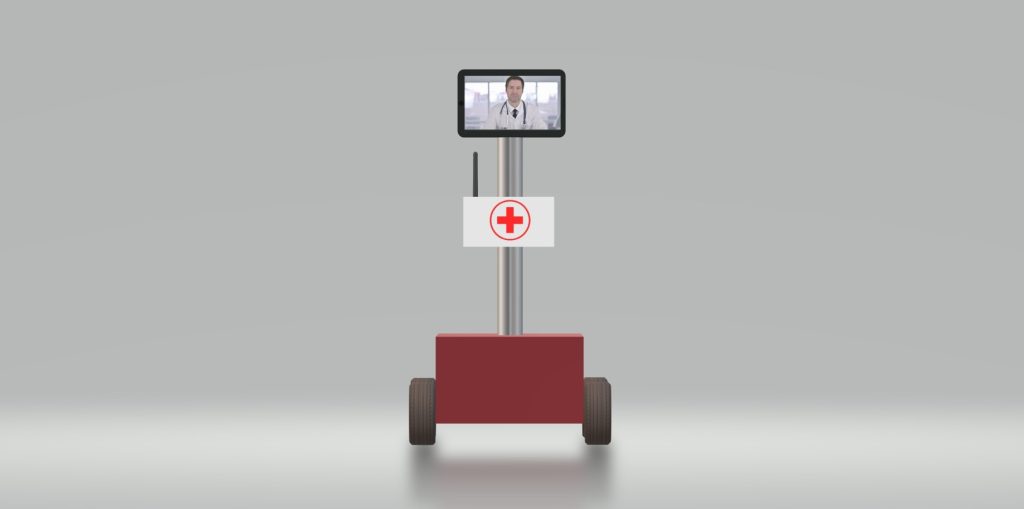
Side View
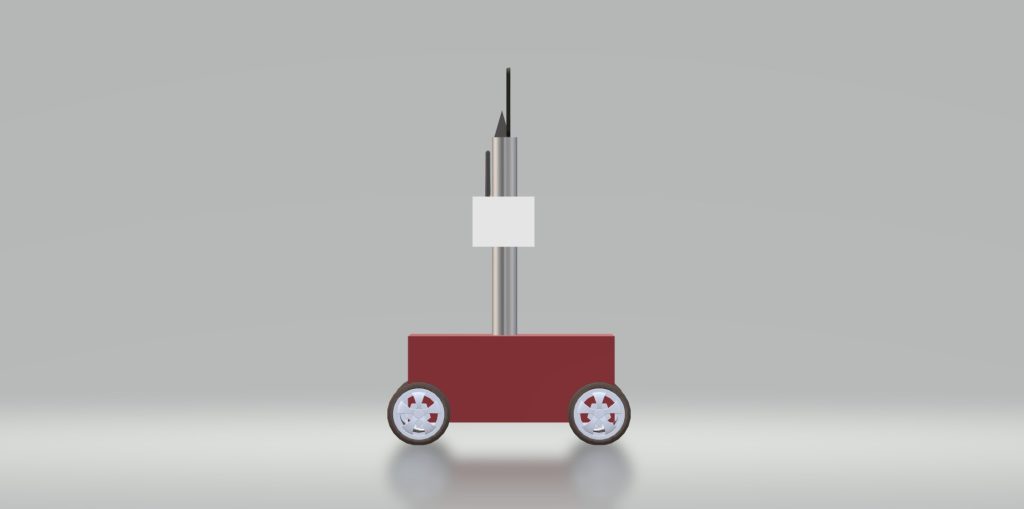
3D View
